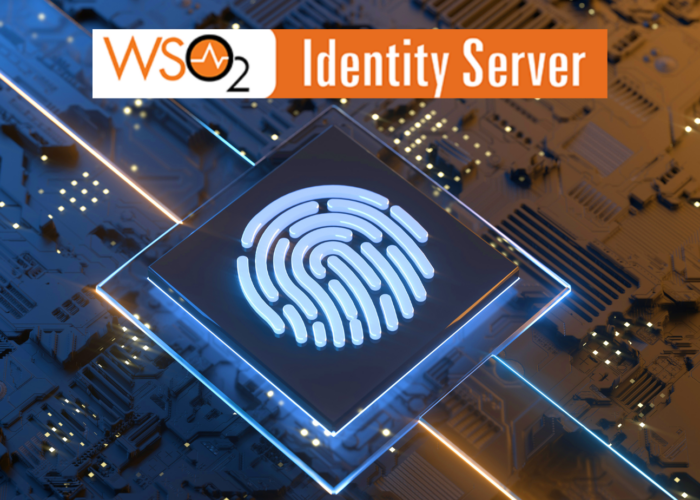The “identity crisis” has led to a rethinking of corporate efficiency and security systems. Identity and access management (IAM) is a fundamental part of any enterprise’s security. Secure identification and authentication of users and devices is essential to protect sensitive business information, prevent fraud and maintain data privacy. For this reason, having IAM solutions in place is crucial for any organisation.
–This article may interest you: Cybersecurity in digital transformation–
In this article, we present the top 5 IAM (Identity and Access Management) solutions for secure identity and access management. These tools offer a wide range of functions and features to ensure the security of your users and business assets. Each of these IAM solutions offers unique features and is best suited to different types of businesses and security needs. Therefore, it is important to carefully evaluate the options before making a decision.
List of the best identity and access management (IAM) solutions: Advantages and disadvantages of each one
There are several Identity and Access Management (IAM) solutions on the market, each with its own advantages and disadvantages. Below is a list of the top 5 IAM solutions and their main pros and cons:
1-Azure Active Directory (Azure AD)
Azure Active Directory (Azure AD) is a cloud-based IAM solution developed by Microsoft. This solution easily integrates with other Microsoft cloud solutions, such as Office 365 and Microsoft Intune.
Advantages of Azure Active Directory
- Integration with other Microsoft cloud solutions: Azure AD integrates easily with other Microsoft solutions, making it an excellent choice for organisations already using other Microsoft cloud solutions.
- Easy to use: The solution is easy to use and manage, reducing implementation time and cost.
- Scalability: Azure AD is a highly scalable solution and can support millions of users without any problems.
Disadvantages of Azure Active Directory
- Dependency on Microsoft cloud: The solution is designed for the Microsoft cloud, which means that organisations that do not use other Microsoft cloud solutions may have trouble integrating Azure AD into their existing infrastructure.
2- WSO2 Identity Server
WSO2 Identity Server is an open source IAM solution that can be deployed in the cloud or on-premises. This solution offers a wide range of features and functionality for identity and access management.
Advantages of WSO2 Identity Server
- Customisation: WSO2 Identity Server is highly customisable and can be tailored to meet the specific needs of organisations.
- Cross-platform support: This solution supports a wide range of platforms and technologies, making it suitable for organisations using multiple systems.
- Integration with other solutions: WSO2 Identity Server easily integrates with other enterprise solutions, such as Salesforce, SAP and AWS.
Disadvantages:
- Learning curve: The solution can be complex for novice users, which can require increased time and effort to implement and manage.
- Requires solid technical knowledge: To take full advantage of this solution’s capabilities, solid technical knowledge in IAM and related technologies is required.
3- Gravitee Identity Management
Gravitee Identity Management is an open source IAM solution that focuses on identity management and access control in APIs. Here are some advantages and disadvantages of this solution:
Advantages
- It is an open source IAM solution, which makes it more accessible and adaptable.
- It offers a wide range of features, such as authentication, authorisation and user management.
- It integrates well with other Gravitee solutions and can be used in cloud and container environments.
Disadvantages
- May require specialised technical knowledge to properly configure and administer the solution.
- Not as well known and used as other IAM solutions on the market.
4-Red Hat Identity Management (IdM)
Red Hat Identity Management (IdM) is an open source identity and access management solution that focuses on identity and policy management in Linux environments. Red Hat IdM provides solutions for authentication, authorisation, user management, and group management, and integrates with other Red Hat products such as Red Hat Enterprise Linux and Red Hat Virtualisation.
Benefits of Red Hat IdM include
- Integration with other Red Hat tools: Red Hat IdM integrates with other Red Hat products, such as Red Hat Enterprise Linux and Red Hat Virtualization, making it easy to deploy and manage.
- Open source platform: Red Hat IdM is an open source solution, which means it can be customised and tailored to meet specific business needs.
- Centralised identity and access management: Red Hat IdM provides centralised identity and access management for Linux environments, allowing enterprises to simplify user and resource management.
- Advanced security: Red Hat IdM provides solutions for multi-factor authentication, key and certificate management, password management, and role and access policy management, enhancing the security of identity and access data.
5- IBM Security Identity and Access Manager (ISAM)
IBM Security Identity and Access Manager (ISAM) is an IAM platform that provides solutions for identity and access management, multi-factor authentication and role-based access control. The platform also has risk analysis and activity monitoring tools to help organisations detect and mitigate potential threats.
Advantages
- It is highly scalable and can support large numbers of users.
- Offers advanced multi-factor authentication solutions.
- It has risk analysis and activity monitoring tools.
Disadvantages
- Can be difficult to implement and use for non-technical users.
- Not as easily customisable.
Main elements to protect an organisation
To properly understand the most relevant identity and access management solutions on the market, it is essential to keep in mind that the implementation of an IAM (Identity & Access Management) system is a process that involves the participation of different areas and hierarchical levels within an organisation. In order to ensure comprehensive protection, it is essential to understand the key elements to be considered and to carefully evaluate the IAM solutions available on the market.
We can list 5 basic elements to protect an organization from cyber-attacks:
1.- Identity controls
It is important in a company to verify user password requirements. In addition, employees must be made aware of the need to comply with these identity controls. These requirements improve the complexity of the security level, making it more complicated to crack the password system. Among the most common factors are: Password length, upper and lower case, numbers, special characters and password reuse time.
2- Multifactor authentication (MFA)
Two- or multi-step verification is an authentication method that requires more than one identity verification procedure. This leads to adding a second level of security to a user’s transactions and logins. Therefore, it is advisable to apply it according to your needs, both for devices and applications. It can work in three steps:
- A password
- A trusted device, e.g. a cell phone
- A physical element such as a fingerprint (biometric).
MFA helps to ensure that employees do not use the same password for different devices and applications.
3.- Training
Different people operating in an organization may not be familiar with how critical it can be to maintain the same passwords across different services. In addition, identities are closely related to the way we are as users. Therefore, it is important to create awareness among employees about identity theft.
4.- Implement Identity Managers
The implementation of an IAM system requires an effort on the part of the company since it entails organizational change. However, the benefits in efficiency and security is the main factor to apply it. These systems have to comply with three characteristics: an integration of all user data, being a flexible system that guarantees changes in the organization’s processes and avoiding human intervention.
5- Monitoring and reporting
Monitoring and reporting of user activity is fundamental to identify and respond quickly to any suspicious activity. It is important to have complete visibility of user activities on the network.
Conclusion
The bottom line is that there are many IAM solutions available on the market, each with its own strengths and weaknesses. When evaluating identity and access management solutions, it is important to consider the solution’s ability to meet the organisation’s specific needs in terms of security, scalability, flexibility and ability to integrate with other information security solutions. The five IAM solutions discussed in this article, Azure Active Directory, WSO2 Identity Server, Gravitee Identity Management, Red Hat IdM and IBM Security Identity and Access Manager (ISAM), are some of the best IAM solutions on the market and can be considered solid choices for secure identity and access management in an enterprise. However, it is important to keep in mind that every enterprise is unique, and choosing the right IAM solution will depend on the specific needs and requirements of that enterprise.
Need help deciding which IAM solution is best for your company? Contact us and we will help you through the entire process from selection to implementation.


Talk to our experts!
Contact our team and discover the cutting-edge technologies that will empower your business.
contact us






